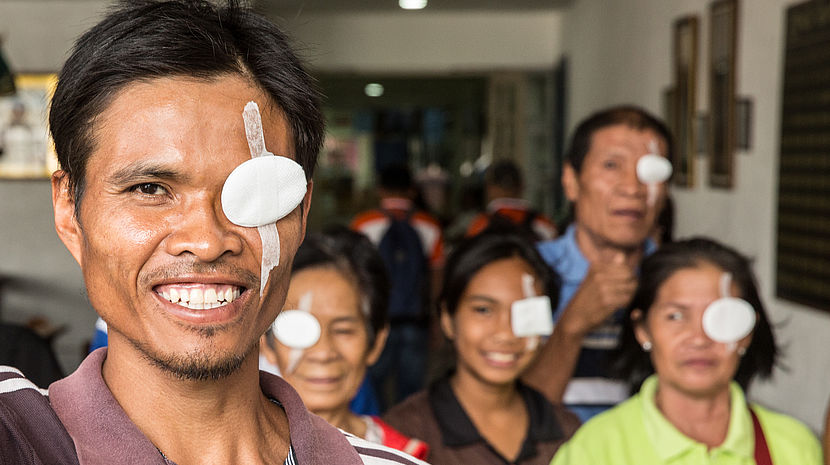30.10.2016 Mitigating barriers in comprehensive eye care

In our 3rd and last piece for our blog series on the 10th IAPB General Assembly (10GA), Dr. Manfred Moerchen (Regional Advisor for Inclusive Eye Health in the Philippines) talks about mitigating barriers in comprehensive eye care.
Blindness and low vision have been identified as an important global cause of the years lived with disability, and empowerment of people who are blind or have low vision is one of the key cross-cutting principles of the WHO Global Action Plan 2014-2019 (“Universal Eye Health”). As only 2% of people in lower income countries have access to basic services and rehabilitation, CBM strives to improve the access for everybody, including people with all types of disabilities, to eye health programmes and to make sure that people with unavoidable blindness and visual impairment have access to low vision services and rehabilitation.
I was trained as an ophthalmologist in the nineties at a tertiary eye hospital in Germany, equipped with all types of state-of-the art expensive equipment. One day, when celebrating World Sight Day, we invited a self-help group of patients with unavoidable visual impairment. They were impressed by the technical possibilities but told us that it was difficult to orientate in the eye department as the building had obviously not been designed to facilitate access for people with visual impairment.
As an ophthalmologist, I was ashamed that even in one of the richest countries in the world we failed to address the needs of patients who needed assistance beyond purely medical treatment.
It strikes me that 15 years later, we still struggle with the same barriers to a holistic eye health service. Eye hospitals are designed without involving people with disabilities in planning. Access to phaco surgery is now often easier than access to low vision devices and people whose sight cannot be restored are constantly not referred to rehabilitation. Again, much more work is needed to mitigate barriers for people with additional impairments: How do we communicate with a cataract patient who is hearing impaired? Do we make sure that patients with Retinitis Pigmentosa and Usher Syndrome are referred to a hearing test? How do we communicate with a patient with Down Syndrome and refractive error?
The GA course will inform 10GA delegates about CBM’s approach to improve disability inclusive practices for strengthening comprehensive eye care with practical examples from eye health projects in Africa and Asia. For instance, delegates will gain insight into how a tertiary eye hospital can improve inclusive practices by employing people with visual impairment, by involving people with all types of disability in improving physical accessibility and by collaborating with Disability People Organizations in mass screening for cataract in the communities.
The 10GA has been an excellent opportunity to share experiences, discuss opportunities and challenges and elaborate on further steps. Practical examples have proven that this is possible, even for programmes with limited financial budget! We have also discussed the challenging aspect of monitoring inclusion to make sure that patients with disabilities are represented in our data and how that might contribute to Universal Eye Health. The goal to further reduce blindness and visual impairment will not be possible if everybody does not have an equal chance to access services.
CBM signs MoU with WHO at the 10GA
We’ve just signed an ambitious Memorandum of Understanding with the World Health Organization (WHO) Regional Office for Africa to eliminate Neglected Tropical Diseases (#NTDs). Read more on the website.
Connect with us and know more
Follow live coverage of the IAPB GA on the CBM website, Facebook and Twitter as well as the blog.